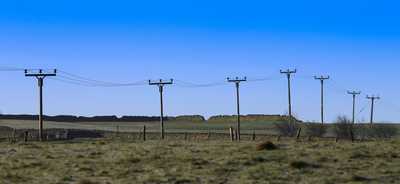Introduction
Distribution network losses are the difference between the electrical energy that enters the distribution network and the electrical energy that reaches the customer. Consequently, a proportion of the enrgy generated does not reach the end user, meaning more power must be produced to meet demand. Reducing losses on our network where reasonably practicable will result in savings for our customers and reduce National Grid Electricity Distribution's carbon footprint.
NGED’s objectives regarding losses management by the end of the RIIO-ED1 period in 2023 are as follows:
- Losses across the NGED network will have been reduced to a level that is as low as economically and practically viable.
- All future investment decisions will take losses into account to ensure that the best balance is achieved between network investment costs today and energy supply costs for future customers.
- Providing the SMETS2 smart meter data is available, NGED will have the tools and methods in place to accurately locate the points on the network with particularly high losses
- All NGED stakeholders will be aware of the importance of losses.
- Using the knowledge gained from innovation projects, computer modelling and investment appraisals NGED will, through business-as-usual (BAU), have produced new and effective means to reduce losses.

During RIIO-ED1, NGED have undertaken the:
• Purchase and installation of 90 single-phase, 25kVA 11kV amorphous pole-mounted transformers (PMTs);
• Oversizing of 448 ground-mounted transformers and 575 pole-mounted transformers per annum;
• Intervention of losses design on new installations of 8,184 distribution transformers and 11,880 kilometres of underground cables;
• Discontinuation of cable tapering on all new 11kV and LV mains cable circuits;
• Standardisation of new 11kV and LV mains cables to minimum conductor sizes of 185mm² and 300mm², and LV service cables to 25mm² Copper (Cu) or 35mm² Aluminium (Al);
• Identification of units lost to supplier side abstraction, unmetered supplies and theft in conveyance;
• Commencement of a stakeholder engagement programme where losses are a designated topic;
• Review of NGED policies to ensure losses are a priority consideration for investment decisions;
• Reduction of voltages across all four license areas of NGED; and
• Introduction of three phase service cables and three phase cut-outs, where reasonably practicable, for all new builds and service alterations as BAU.

